Key Takeaways
- Leverage Top Job Platforms & Recruitment Agencies – Use platforms like 9cv9 Job Portal, LinkedIn, and Indeed to access Maryland’s best talent.
- Optimize Hiring with Data-Driven Strategies – Implement AI-powered applicant tracking systems (ATS) and predictive analytics for efficient recruitment.
- Enhance Retention with Competitive Benefits – Offer competitive salaries, flexible work options, and professional growth opportunities to reduce turnover.
Hiring the right employees is a critical component of business success, and in 2025, the recruitment landscape in Maryland continues to evolve with emerging trends, technological advancements, and shifting workforce expectations.
As businesses compete for top talent in a competitive job market, understanding the most effective hiring strategies is essential to attracting, recruiting, and retaining skilled employees.
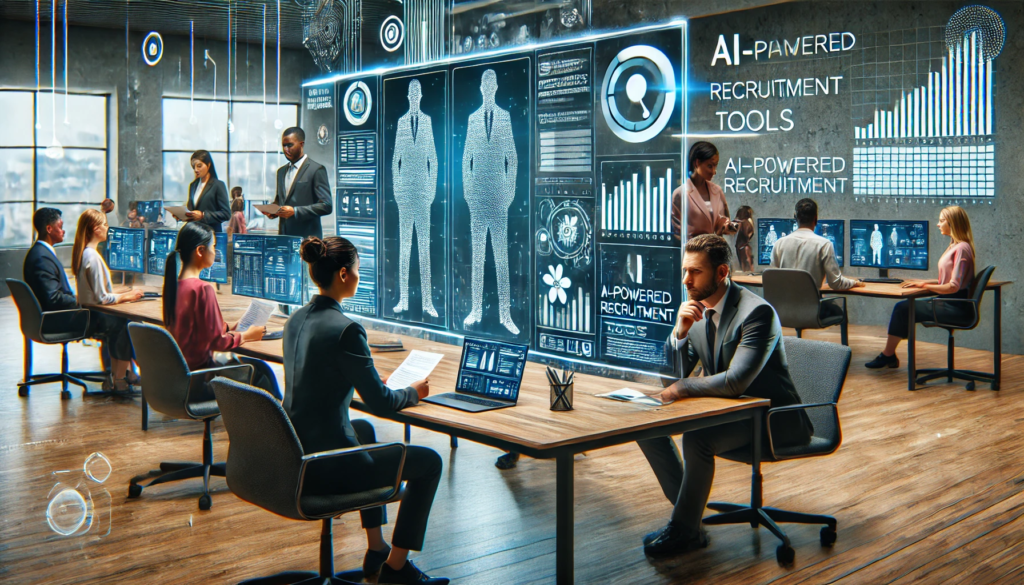
Maryland, known for its diverse economy and strong presence in industries such as healthcare, technology, government contracting, and manufacturing, offers a dynamic job market.
With cities like Baltimore, Annapolis, and Bethesda serving as employment hubs, businesses must adapt to the latest hiring trends to secure the best talent.
Additionally, factors such as the rise of remote and hybrid work, advancements in artificial intelligence-driven recruitment tools, and changing labor laws significantly influence the hiring process in the state.
One of the biggest challenges Maryland employers face in 2025 is the growing demand for highly skilled professionals in competitive industries.
Companies need to refine their recruitment strategies, leveraging digital platforms, AI-powered applicant tracking systems (ATS), and targeted employer branding techniques to reach top-tier candidates.
Furthermore, the emphasis on workplace diversity, equity, and inclusion (DEI) continues to shape hiring policies, requiring businesses to implement fair and inclusive recruitment practices to attract a broad talent pool.
In addition to understanding workforce trends, Maryland employers must navigate state-specific labor regulations.
Compliance with Maryland’s employment laws—including minimum wage requirements, workplace safety regulations, and anti-discrimination policies—is crucial to avoiding legal complications.
Employers must also stay updated on evolving hiring practices, such as background checks, contract employment guidelines, and remote workforce management regulations.
This comprehensive guide will walk you through the essential steps of finding and hiring employees in Maryland in 2025.
From identifying the best job platforms and recruitment channels to optimizing the screening and interview process, this blog will provide actionable insights to streamline your hiring strategy.
Additionally, we will explore best practices for retaining top talent, including competitive compensation packages, employee engagement initiatives, and career development programs.
Whether you are a startup looking to build a strong workforce or an established company seeking to refine your hiring process, this guide will equip you with the necessary tools to attract and retain highly qualified employees in Maryland.
By implementing the right recruitment strategies and staying informed about the latest hiring trends, businesses can position themselves for long-term success in a rapidly evolving job market.
Before we venture further into this article, we would like to share who we are and what we do.
About 9cv9
9cv9 is a business tech startup based in Singapore and Asia, with a strong presence all over the world.
With over nine years of startup and business experience, and being highly involved in connecting with thousands of companies and startups, the 9cv9 team has listed some important learning points in this overview of How to Find and Hire Employees in Maryland, USA in 2025.
If your company needs recruitment and headhunting services to hire top-quality employees, you can use 9cv9 headhunting and recruitment services to hire top talents and candidates. Find out more here, or send over an email to [email protected].
Or just post 1 free job posting here at 9cv9 Hiring Portal in under 10 minutes.
How to Find and Hire Employees in Maryland, USA in 2025
- Understanding Maryland’s Job Market in 2025
- Best Platforms to Find Employees in Maryland
- Steps to Hiring Employees in Maryland
- Strategies for Retaining Employees in Maryland
1. Understanding Maryland’s Job Market in 2025
Maryland’s job market in 2025 presents a dynamic landscape shaped by economic growth, technological advancements, and evolving workforce trends. As businesses seek to attract top talent, understanding key industry trends, employment shifts, and legal requirements is essential for effective hiring. The state’s proximity to Washington, D.C., its diverse industry base, and a strong emphasis on innovation contribute to a competitive labor market that requires employers to adopt strategic recruitment approaches.
This section explores Maryland’s employment landscape, including high-demand industries, workforce trends, and the legal framework shaping hiring practices.
Key Employment Trends in Maryland
Maryland’s workforce in 2025 is influenced by several factors, including industry-specific growth, increased demand for hybrid work models, and the need for upskilling.
1. High-Demand Industries in Maryland
Certain industries continue to drive employment growth in Maryland, creating opportunities for businesses and job seekers alike.
- Technology and Cybersecurity
- With Maryland’s close ties to federal agencies and defense contractors, cybersecurity remains a critical industry.
- Companies like Northrop Grumman and Lockheed Martin continue expanding their cybersecurity divisions.
- Growing demand for AI specialists, data scientists, and cloud engineers.
- Healthcare and Biotechnology
- The presence of Johns Hopkins Hospital and the National Institutes of Health (NIH) makes Maryland a leader in medical research and healthcare innovation.
- Rising demand for nurses, medical technicians, and healthcare administrators.
- Biotech firms in Montgomery County continue driving research in genetics, pharmaceuticals, and medical devices.
- Government and Public Administration
- Federal and state government jobs remain a stable employment sector.
- Growth in regulatory agencies, environmental policy roles, and public service positions.
- Manufacturing and Logistics
- The Port of Baltimore continues to expand, increasing demand for supply chain managers, logistics coordinators, and warehouse staff.
- Growth in advanced manufacturing, particularly in aerospace and defense.
- Hospitality and Tourism
- Cities like Baltimore and Ocean City experience rising tourism, fueling demand for hotel management, restaurant staff, and event planning professionals.
- An increase in sustainable and eco-tourism initiatives creates new job opportunities.
2. Growth of Hybrid and Remote Work Models
- The shift toward hybrid and fully remote work continues in 2025, impacting hiring strategies and workforce distribution.
- Many Maryland-based companies now offer remote work options to attract top talent beyond state borders.
- Industries like IT, digital marketing, and finance are seeing the highest levels of remote employment.
- Maryland employers must adapt by leveraging digital hiring platforms, conducting virtual interviews, and implementing remote workforce management policies.
3. Increasing Demand for Skilled Workers
- Employers are prioritizing candidates with specialized technical skills over general qualifications.
- High demand for professionals with expertise in data analytics, cloud computing, machine learning, and automation.
- Vocational training and certification programs are becoming more relevant as employers seek job-ready candidates.
- Example: The Maryland Apprenticeship and Training Program (MATP) helps companies train workers in critical skill areas.
4. Emphasis on Diversity, Equity, and Inclusion (DEI)
- Companies are strengthening DEI initiatives to create more inclusive work environments.
- Many organizations are implementing bias-free hiring processes, using AI tools to ensure fair candidate evaluation.
- Example: Large firms like Under Armour and T. Rowe Price have established DEI hiring commitments to attract diverse talent.
Maryland’s Labor Laws and Hiring Regulations
Understanding state labor laws is crucial for businesses hiring employees in Maryland in 2025. Compliance ensures legal protection and fosters a positive work environment.
1. Minimum Wage and Employee Rights
- Maryland’s minimum wage is set to increase in 2025, affecting salary structures across various industries.
- Employers must comply with the Maryland Wage Payment and Collection Law to ensure timely compensation.
- Workers are entitled to paid sick leave under the Maryland Healthy Working Families Act.
2. Anti-Discrimination and Equal Employment Opportunity (EEO) Regulations
- Maryland enforces strict anti-discrimination laws under the Maryland Commission on Civil Rights (MCCR).
- Employers must implement unbiased hiring processes and accommodate employees with disabilities.
- Equal Pay for Equal Work laws require employers to offer fair wages across gender and race.
3. Employee Classification and Gig Economy Considerations
- The rise of gig and freelance work requires businesses to properly classify workers as employees or independent contractors.
- Companies must adhere to the Maryland Workplace Fraud Act when hiring independent contractors.
- Example: Employers hiring part-time workers for delivery services must comply with worker classification rules to avoid penalties.
4. Background Checks and Hiring Compliance
- Maryland enforces “Ban the Box” laws, restricting employers from inquiring about criminal history early in the hiring process.
- Companies conducting background checks must comply with the Maryland Consumer Reporting Act to ensure fair hiring practices.
- Example: Employers in financial services and healthcare are required to perform thorough background checks due to industry regulations.
Future Outlook for Maryland’s Job Market
The employment landscape in Maryland is expected to continue evolving in response to economic trends, workforce demands, and legislative changes.
1. Integration of AI and Automation in Hiring
- More companies are adopting AI-powered applicant tracking systems (ATS) to streamline recruitment.
- Automated resume screening and chatbot interviews are becoming standard practices.
- AI-driven tools help mitigate hiring biases, ensuring fair candidate evaluation.
2. Continued Growth in Green and Sustainable Jobs
- Maryland’s commitment to renewable energy and environmental sustainability is creating new job opportunities.
- Growth in solar energy installation, environmental engineering, and sustainable construction.
- Example: Maryland’s Clean Energy Jobs Act is driving demand for professionals in wind and solar industries.
3. Expansion of Workforce Training and Upskilling Programs
- Increased state investment in workforce development programs to address skill shortages.
- Maryland’s EARN (Employment Advancement Right Now) Program helps businesses train and retain skilled workers.
- Employers are offering tuition reimbursement and training incentives to attract talent.
Conclusion
Maryland’s job market in 2025 is marked by rapid technological advancements, increased demand for skilled professionals, and evolving labor laws. As businesses navigate this competitive landscape, understanding high-growth industries, adapting to new workforce trends, and ensuring legal compliance will be key to successful hiring. By leveraging AI-driven recruitment strategies, focusing on DEI initiatives, and offering competitive compensation packages, Maryland employers can attract and retain top talent in an increasingly dynamic job market.
2. Best Platforms to Find Employees in Maryland
Hiring employees in Maryland requires leveraging the right recruitment platforms to access a broad pool of qualified candidates. In 2025, businesses have numerous options, ranging from general job boards to industry-specific hiring platforms, recruitment agencies, and social media networks. Choosing the right platform depends on factors such as job roles, industry focus, and budget.
This section explores the best platforms to find and hire employees in Maryland in 2025, including job boards, recruitment agencies, social media hiring tools, and government-supported employment resources.
1. Online Job Portals and Recruitment Platforms
Job boards remain one of the most effective ways to reach job seekers in Maryland. These platforms offer access to a diverse talent pool, applicant tracking features, and employer branding tools.
1.1 9cv9 Job Portal
- 9cv9 is a highly effective recruitment platform specializing in connecting employers with skilled candidates across multiple industries.
- Offers advanced AI-driven matching to help businesses find the most relevant job seekers.
- Provides employers with features like job postings, resume screening, and interview scheduling.
- Example: A Baltimore-based tech company looking for software engineers can leverage 9cv9’s targeted recruitment solutions to attract top IT talent.
1.2 Indeed
- One of the largest job search engines, aggregating job listings from multiple sources.
- Offers both free and sponsored job postings for greater visibility.
- AI-powered filtering allows employers to identify top candidates quickly.
1.3 LinkedIn Jobs
- A professional networking platform with a dedicated job board.
- Employers can post jobs, search for candidates, and leverage LinkedIn Recruiter tools.
- Best suited for executive, corporate, and technology-related hiring.
1.4 ZipRecruiter
- Uses AI-driven candidate matching to help businesses connect with job seekers.
- Distributes job postings to over 100 job sites for wider reach.
- Automated screening tools allow companies to pre-qualify applicants.
1.5 Glassdoor
- Best known for company reviews, but also features a job board.
- Employers can build a strong brand presence to attract top candidates.
- Example: A Maryland-based startup can use Glassdoor to showcase its workplace culture and attract young professionals.
2. Recruitment Agencies and Staffing Firms
Recruitment agencies help employers find top talent by handling candidate sourcing, screening, and onboarding. These services are particularly useful for specialized hiring needs, such as executive searches and contract staffing.
2.1 9cv9 Recruitment Agency
- A leading recruitment agency that specializes in talent acquisition for businesses in Maryland.
- Provides end-to-end hiring solutions, including candidate sourcing, interview coordination, and onboarding support.
- Offers expertise in various industries, including IT, finance, healthcare, and engineering.
- Example: A healthcare provider in Maryland can partner with 9cv9 Recruitment Agency to quickly hire qualified nurses and medical professionals.
2.2 Robert Half
- Specializes in accounting, finance, IT, and administrative staffing.
- Offers temporary, full-time, and project-based hiring solutions.
- Provides candidate assessment and skill-matching services.
2.3 Aerotek
- One of the largest staffing firms in the U.S., with a strong presence in Maryland.
- Focuses on industrial, engineering, and healthcare staffing.
- Helps businesses fill temporary, contract, and permanent positions.
2.4 Kelly Services
- Offers flexible workforce solutions for industries like education, healthcare, and life sciences.
- Provides recruitment process outsourcing (RPO) for businesses needing large-scale hiring support.
2.5 TEKsystems
- A top IT staffing and talent management firm.
- Helps Maryland-based businesses find skilled software developers, cybersecurity experts, and data analysts.
3. Social Media and Professional Networks
Social media platforms are increasingly used for recruitment, allowing employers to connect with candidates directly and promote their company culture.
3.1 LinkedIn
- The top platform for professional networking and hiring.
- Companies can post jobs, engage with candidates, and showcase their employer brand.
- Best for executive searches, corporate roles, and technology-related hiring.
3.2 Facebook Jobs
- Allows businesses to post job openings on their company pages and in local job groups.
- Useful for hiring in retail, customer service, and hospitality.
- Example: A restaurant in Baltimore can post job openings in Maryland-based Facebook job groups to attract local applicants.
3.3 Twitter (X) Hiring
- Companies can use Twitter (X) to promote job openings and engage with industry professionals.
- Best for companies targeting younger professionals and digital marketing roles.
3.4 Instagram Recruiting
- Ideal for brands that want to attract creative professionals.
- Useful for showcasing company culture and employer branding.
4. Government and State-Sponsored Hiring Resources
Maryland offers several government-supported hiring platforms and workforce programs to help businesses recruit talent.
4.1 Maryland Workforce Exchange (MWE)
- A state-run job board connecting employers with local job seekers.
- Offers free job posting and candidate search tools.
- Includes resources for workforce training and employment grants.
4.2 Maryland Department of Labor Hiring Programs
- Provides assistance to employers in recruiting and training new employees.
- Offers apprenticeship programs and tax incentives for businesses hiring local talent.
4.3 Local Chambers of Commerce and Business Networks
- Many local business organizations, such as the Greater Baltimore Committee, help employers connect with job seekers.
- Networking events and job fairs provide direct access to talent.
5. Niche and Industry-Specific Hiring Platforms
For employers hiring in specialized industries, niche job boards provide access to highly qualified professionals.
5.1 Dice (Tech and IT Jobs)
- A leading job board for hiring IT professionals, including software engineers, AI specialists, and cybersecurity experts.
- Example: A Maryland-based fintech company looking for blockchain developers can use Dice to find niche talent.
5.2 Health eCareers (Healthcare Jobs)
- A top job board for medical and healthcare professionals.
- Used by hospitals, clinics, and biotech firms to hire nurses, doctors, and lab technicians.
5.3 Handshake (University Hiring and Internships)
- Connects employers with college students and recent graduates.
- Ideal for businesses seeking interns or entry-level hires from Maryland’s top universities.
Conclusion
In 2025, hiring employees in Maryland requires a strategic approach that incorporates multiple recruitment platforms. Employers can maximize their hiring success by utilizing a mix of job portals, recruitment agencies, social media networks, and government-backed employment programs.
For businesses seeking fast and efficient hiring solutions, 9cv9 Job Portal and 9cv9 Recruitment Agency offer comprehensive services tailored to various industries. Additionally, leveraging social media, niche job boards, and local hiring resources can help employers connect with top talent in Maryland’s competitive job market.
3. Steps to Hiring Employees in Maryland
Hiring employees in Maryland requires a well-structured approach to ensure compliance with state and federal laws, attract the right talent, and create a smooth onboarding process. Employers must follow key steps to streamline hiring, from defining job roles to finalizing employment contracts. This guide provides a detailed breakdown of each stage of the hiring process to help businesses successfully recruit and retain employees in Maryland in 2025.
1. Define Job Requirements and Hiring Needs
Before starting the recruitment process, businesses must clearly define job roles and hiring needs to attract the right candidates.
1.1 Identify Business Hiring Goals
- Assess workforce gaps and determine the number of hires needed.
- Identify whether roles are full-time, part-time, contract-based, or remote.
- Consider future business growth and industry trends.
- Example: A cybersecurity firm in Baltimore planning expansion may need to hire specialized IT security analysts to support new clients.
1.2 Create a Detailed Job Description
- List job responsibilities, required skills, and experience levels.
- Include key qualifications such as education, certifications, and technical expertise.
- Define job location (onsite, hybrid, or remote) and salary range.
- Example: A manufacturing company in Maryland hiring production supervisors must specify experience in industrial processes and OSHA compliance knowledge.
1.3 Set Competitive Compensation and Benefits
- Research industry salary benchmarks in Maryland.
- Offer attractive benefits, including health insurance, paid leave, and professional development programs.
- Highlight unique perks such as flexible work schedules or tuition reimbursement.
- Example: A startup in Bethesda may offer stock options and remote work flexibility to attract tech talent.
2. Choose the Right Hiring Platform
Selecting the best recruitment platform ensures access to a diverse talent pool.
2.1 Use Online Job Portals
- Post job openings on platforms like 9cv9 Job Portal, Indeed, and LinkedIn Jobs.
- Leverage AI-driven candidate matching for more efficient hiring.
- Example: A logistics company in Maryland can use 9cv9 Job Portal to find warehouse managers and supply chain analysts.
2.2 Work with Recruitment Agencies
- Partner with 9cv9 Recruitment Agency for specialized hiring services.
- Use staffing firms like Robert Half for finance roles or Aerotek for engineering jobs.
- Example: A healthcare provider needing licensed nurses can use 9cv9 Recruitment Agency for faster talent acquisition.
2.3 Leverage Social Media for Hiring
- Post job openings on LinkedIn, Facebook, and Twitter (X).
- Engage with industry professionals through networking events and virtual job fairs.
- Example: A creative agency can use Instagram to showcase company culture and attract graphic designers.
3. Screen and Shortlist Candidates
Once applications are received, employers must efficiently screen and shortlist candidates to identify the best fit.
3.1 Review Resumes and Applications
- Use Applicant Tracking Systems (ATS) to filter candidates based on job criteria.
- Prioritize applicants with relevant skills and experience.
- Example: A biotech company hiring research analysts can use AI-powered resume screening to shortlist candidates with clinical trial experience.
3.2 Conduct Initial Screening Interviews
- Hold phone or video interviews to assess candidates’ communication skills and cultural fit.
- Verify availability, salary expectations, and work authorization.
- Example: A software firm in Rockville can use Zoom interviews for remote developer hiring.
3.3 Administer Skills Tests (If Applicable)
- Conduct coding assessments for IT roles.
- Use personality and aptitude tests for customer service jobs.
- Example: A financial services company may require candidates to complete an Excel-based financial modeling test.
4. Conduct In-Depth Interviews
Employers should conduct structured interviews to evaluate candidates thoroughly.
4.1 Schedule Panel or One-on-One Interviews
- Include hiring managers, team members, and HR representatives in the interview process.
- Use behavioral and situational questions to assess problem-solving skills.
- Example: A legal firm hiring paralegals may conduct a multi-round interview process to test legal research skills.
4.2 Verify Work Experience and References
- Contact previous employers to confirm job history and performance.
- Request recommendations from professional mentors or former supervisors.
- Example: A construction company hiring project managers can verify past project experience through client testimonials.
4.3 Check for Cultural Fit
- Evaluate whether the candidate aligns with the company’s values and mission.
- Assess adaptability, teamwork, and long-term career aspirations.
- Example: A nonprofit organization hiring community outreach coordinators may focus on candidates passionate about social work.
5. Conduct Background Checks and Compliance Verification
Maryland employers must follow legal hiring practices and conduct necessary background screenings.
5.1 Perform Criminal Background Checks
- Adhere to Maryland’s Ban-the-Box law, which restricts asking about criminal history during initial hiring stages.
- Conduct background checks for roles requiring security clearance or handling sensitive data.
- Example: A financial institution must perform thorough background screening for banking officers.
5.2 Verify Work Authorization (I-9 Compliance)
- Ensure employees are legally eligible to work in the U.S.
- Use E-Verify for federal employment authorization verification.
- Example: An international company setting up a Maryland office must verify work visas for foreign hires.
5.3 Check Certifications and Licensing Requirements
- Verify professional licenses for roles such as healthcare, real estate, and engineering.
- Confirm educational degrees and accreditation from recognized institutions.
- Example: A hospital hiring radiologists must confirm board certifications.
6. Make a Job Offer and Negotiate Terms
After selecting the best candidate, employers must finalize hiring terms and send a formal offer letter.
6.1 Draft a Competitive Job Offer Letter
- Outline salary, benefits, job role, and employment terms.
- Include information on probation periods and performance evaluations.
- Example: A government contractor hiring engineers may include security clearance requirements in the offer.
6.2 Negotiate Salary and Benefits
- Be prepared to discuss salary expectations and counteroffers.
- Offer signing bonuses or relocation assistance for high-demand positions.
- Example: A cybersecurity company may offer remote work incentives to attract top talent.
6.3 Secure a Signed Employment Agreement
- Ensure legal compliance with Maryland’s employment laws.
- Outline non-compete clauses, confidentiality agreements, and job responsibilities.
- Example: A biotech firm hiring researchers may include intellectual property clauses in the contract.
7. Onboard and Train New Employees
A structured onboarding process helps new hires integrate smoothly into the company.
7.1 Provide Orientation and Training
- Introduce company policies, workplace culture, and team members.
- Offer job-specific training programs for technical roles.
- Example: A manufacturing plant may conduct hands-on safety training for machine operators.
7.2 Assign a Mentor or Buddy System
- Pair new employees with experienced team members for guidance.
- Encourage open communication and support.
- Example: A marketing agency may assign senior strategists to mentor junior copywriters.
7.3 Set Performance Goals and Review Periods
- Define key performance indicators (KPIs) and expectations.
- Schedule 30-day, 60-day, and 90-day performance evaluations.
- Example: A customer service center may track response times and satisfaction ratings for new hires.
Conclusion
Hiring employees in Maryland in 2025 requires a structured approach, from defining job roles to onboarding new hires. Businesses can streamline the process by leveraging recruitment platforms such as 9cv9 Job Portal and 9cv9 Recruitment Agency, conducting thorough interviews, ensuring compliance with Maryland employment laws, and providing a strong onboarding experience.
By following these steps, companies can attract top talent, build a skilled workforce, and drive long-term business success in Maryland.
4. Strategies for Retaining Employees in Maryland
Employee retention is a critical factor for business success in Maryland, as companies face increasing competition for skilled workers. Retaining employees requires a well-rounded approach that includes competitive compensation, career growth opportunities, workplace culture, and employee well-being initiatives. In 2025, Maryland employers must adopt strategic retention methods to reduce turnover, enhance job satisfaction, and build a loyal workforce.
This guide outlines key strategies for employee retention in Maryland, including best practices tailored to various industries.
1. Offer Competitive Compensation and Benefits
Attractive compensation packages help retain top talent and reduce employee turnover.
1.1 Provide Competitive Salaries
- Conduct market research to ensure salaries align with industry standards.
- Offer performance-based raises and bonuses to reward achievements.
- Example: A tech startup in Baltimore competing with national firms can offer stock options and profit-sharing incentives.
1.2 Enhance Employee Benefits
- Offer comprehensive health insurance covering medical, dental, and vision care.
- Provide retirement plans, such as 401(k) matching or pension contributions.
- Include family-friendly benefits like paid parental leave and childcare assistance.
- Example: A manufacturing company in Maryland can attract and retain skilled workers by offering wellness programs and flexible spending accounts (FSAs).
1.3 Offer Financial Incentives and Perks
- Provide signing bonuses for hard-to-fill positions.
- Offer tuition reimbursement for employees pursuing higher education.
- Implement employee stock ownership plans (ESOPs) for long-term retention.
- Example: A biotech firm in Rockville can cover certification costs for lab technicians to encourage career growth.
2. Foster a Positive Workplace Culture
A supportive and inclusive work environment encourages employees to stay long-term.
2.1 Promote Work-Life Balance
- Offer flexible work arrangements, including remote and hybrid work options.
- Provide generous paid time off (PTO), including mental health days.
- Encourage employees to disconnect after work hours to prevent burnout.
- Example: A digital marketing agency in Bethesda can allow employees to work remotely twice a week to enhance work-life balance.
2.2 Recognize and Reward Employees
- Implement employee recognition programs to celebrate achievements.
- Offer monthly or quarterly performance awards such as bonuses or gift cards.
- Publicly acknowledge employees’ contributions during team meetings.
- Example: A retail company in Maryland can create an “Employee of the Month” program with incentives like extra PTO.
2.3 Create a Collaborative and Inclusive Culture
- Encourage open communication through regular team meetings.
- Promote diversity, equity, and inclusion (DEI) initiatives to foster a sense of belonging.
- Organize team-building activities to strengthen workplace relationships.
- Example: A healthcare organization in Maryland can establish employee resource groups (ERGs) to support underrepresented communities.
3. Provide Career Development and Growth Opportunities
Employees are more likely to stay with companies that invest in their professional growth.
3.1 Offer Training and Upskilling Programs
- Provide continuous learning opportunities through online courses, workshops, and certifications.
- Sponsor employees to attend industry conferences and networking events.
- Develop in-house mentorship and leadership training programs.
- Example: A financial services firm in Baltimore can provide CFA exam sponsorships for junior analysts.
3.2 Establish Clear Career Progression Paths
- Outline promotion criteria and career roadmaps for each department.
- Conduct annual career planning meetings to discuss employees’ long-term goals.
- Offer internal mobility programs to allow employees to transition into new roles.
- Example: A cybersecurity company in Maryland can create a structured path for entry-level analysts to advance into managerial roles.
3.3 Implement Performance-Based Promotions
- Set measurable goals and key performance indicators (KPIs) for promotions.
- Encourage employees to take on leadership roles within projects.
- Offer cross-training programs to help employees acquire new skills.
- Example: A logistics company can allow warehouse supervisors to transition into operations management positions based on performance metrics.
4. Improve Employee Engagement and Job Satisfaction
Engaged employees are more productive and committed to the organization.
4.1 Conduct Regular Employee Feedback Surveys
- Use anonymous surveys to gather insights on job satisfaction and workplace issues.
- Implement action plans based on employee feedback.
- Hold one-on-one check-ins between employees and managers.
- Example: A Maryland-based software firm can use pulse surveys to monitor employee sentiment and improve retention strategies.
4.2 Encourage Employee Autonomy and Decision-Making
- Give employees ownership over their projects and responsibilities.
- Reduce micromanagement by fostering a trust-based work culture.
- Implement collaborative decision-making for company policies and initiatives.
- Example: A consulting firm can allow consultants to choose their projects based on expertise and interests.
4.3 Provide Opportunities for Innovation
- Encourage employees to suggest new ideas through innovation programs.
- Offer incentives for successful implementation of innovative solutions.
- Host hackathons or brainstorming sessions for creative problem-solving.
- Example: A Maryland-based AI startup can create an “Innovation Lab” where employees work on side projects that could benefit the company.
5. Strengthen Leadership and Management Practices
Effective leadership plays a crucial role in employee retention.
5.1 Train Managers to be Effective Leaders
- Offer leadership development programs for managers.
- Train supervisors on emotional intelligence and conflict resolution.
- Encourage a coaching-based leadership approach instead of top-down management.
- Example: A hospitality business in Maryland can train hotel managers to handle team dynamics effectively.
5.2 Maintain Transparent and Honest Communication
- Hold regular town hall meetings to update employees on company goals.
- Encourage an open-door policy for employees to express concerns.
- Provide constructive feedback rather than just criticism.
- Example: A law firm in Maryland can conduct quarterly “Ask Me Anything” (AMA) sessions with leadership.
5.3 Reduce Workplace Stress and Burnout
- Monitor workloads to prevent employee exhaustion.
- Encourage employees to take breaks and use their vacation days.
- Provide access to mental health resources and employee assistance programs (EAPs).
- Example: A non-profit organization in Maryland can offer wellness stipends for yoga classes or therapy sessions.
6. Adapt to Changing Workforce Trends
Maryland’s job market is evolving, and companies must stay ahead of workforce trends to retain employees.
6.1 Embrace Remote and Hybrid Work Models
- Offer flexible schedules to accommodate different working styles.
- Provide stipends for home office setups or co-working space memberships.
- Example: A digital marketing company in Annapolis can adopt a hybrid model where employees work three days in-office and two days remotely.
6.2 Support Generational Workforce Needs
- Understand different work preferences of Gen Z, Millennials, Gen X, and Baby Boomers.
- Tailor benefits based on generational priorities (e.g., student loan assistance for younger workers, retirement planning for older employees).
- Example: A government agency in Maryland can offer mentorship programs that pair senior employees with younger professionals.
6.3 Implement Technology for Employee Engagement
- Use AI-driven HR tools to personalize employee experiences.
- Leverage HR analytics to predict turnover risks and improve retention efforts.
- Example: A retail company can use AI-powered scheduling software to provide employees with preferred shift choices.
Conclusion
Retaining employees in Maryland in 2025 requires a strategic approach that includes competitive compensation, strong workplace culture, career growth opportunities, and effective leadership. Employers must stay adaptable to changing workforce trends and create a supportive environment where employees feel valued and engaged.
By implementing these retention strategies, businesses can reduce turnover, increase employee satisfaction, and build a loyal workforce that drives long-term success.
Conclusion
Finding and hiring employees in Maryland in 2025 requires a strategic, well-planned approach that leverages modern recruitment methods, digital tools, and strong employer branding. As the job market continues to evolve with new trends and technologies, businesses must adopt a flexible and proactive hiring strategy to attract and retain top talent.
Maryland’s diverse economy, spanning industries such as technology, healthcare, education, manufacturing, and hospitality, presents unique hiring challenges and opportunities. Employers must stay ahead of the competition by utilizing a mix of job boards, recruitment agencies, social media platforms, and employee referral programs to reach the most qualified candidates. Platforms such as 9cv9 Job Portal and 9cv9 Recruitment Agency provide invaluable support by connecting businesses with top-tier professionals and streamlining the hiring process.
Key Takeaways for Hiring Success in Maryland
To build a strong workforce in Maryland, employers must integrate various best practices into their hiring process:
- Leverage Online Job Portals and Recruitment Agencies
- Use trusted platforms like 9cv9 Job Portal and 9cv9 Recruitment Agency to access a wider talent pool.
- Post job openings on LinkedIn, Indeed, Glassdoor, and specialized industry job boards.
- Enhance Employer Branding and Candidate Experience
- Create an engaging careers page with compelling job descriptions and employee testimonials.
- Offer a seamless and professional hiring experience to attract high-caliber talent.
- Maintain transparent communication throughout the hiring process to build trust with candidates.
- Utilize Technology and Data-Driven Hiring Approaches
- Implement AI-powered applicant tracking systems (ATS) to automate resume screening and interview scheduling.
- Use data analytics to refine job postings and target the right candidates effectively.
- Tap Into Local Talent Pools and Workforce Development Programs
- Partner with Maryland’s universities, colleges, and technical schools to recruit recent graduates.
- Collaborate with local government workforce initiatives to access trained professionals.
- Offer Competitive Compensation and Employee Benefits
- Conduct market research to ensure salaries and benefits match industry standards.
- Provide incentives such as health insurance, flexible work arrangements, career development programs, and performance-based bonuses.
- Refine Recruitment Strategies for Retention
- Invest in employee engagement and workplace culture to reduce turnover.
- Develop mentorship programs, professional development opportunities, and internal mobility pathsto keep employees motivated.
Adapting to the Future of Hiring in Maryland
The future of hiring in Maryland is shaped by ongoing technological advancements, remote work trends, and changing workforce expectations. Businesses must remain adaptable, data-driven, and employee-focused to secure the best talent.
- Remote and Hybrid Work Models
- Many companies continue to offer flexible work options to attract a wider range of candidates.
- Employers should invest in remote collaboration tools to manage hybrid teams effectively.
- Diversity, Equity, and Inclusion (DEI) Initiatives
- Inclusive hiring practices ensure a more dynamic, innovative, and productive workforce.
- Businesses should implement blind recruitment, bias-free job descriptions, and DEI training for hiring managers.
- AI and Automation in Hiring
- AI-driven tools help streamline resume screening, enhance candidate matching, and improve overall efficiency.
- Employers should integrate predictive hiring analytics to make more informed hiring decisions.
Final Thoughts
Successfully finding and hiring employees in Maryland in 2025 requires a multi-faceted, strategic approach that balances technology with human-centric hiring practices. Employers who invest in strong recruitment strategies, build an attractive workplace culture, and offer competitive compensation will have a significant advantage in securing the best talent.
By leveraging reputable recruitment platforms such as 9cv9 Job Portal and 9cv9 Recruitment Agency, utilizing AI-driven hiring tools, and fostering a positive work environment, businesses can create a workforce that is both skilled and committed to long-term success.
As the job market continues to evolve, Maryland employers must remain proactive, flexible, and innovative to attract and retain top-tier professionals. Those who adapt to these hiring trends and implement effective recruitment strategies will position themselves as industry leaders in 2025 and beyond.
If you find this article useful, why not share it with your hiring manager and C-level suite friends and also leave a nice comment below?
We, at the 9cv9 Research Team, strive to bring the latest and most meaningful data, guides, and statistics to your doorstep.
To get access to top-quality guides, click over to 9cv9 Blog.
People Also Ask
What are the best ways to find employees in Maryland in 2025?
Employers can find employees through job boards like LinkedIn, Indeed, and 9cv9 Job Portal, recruitment agencies, networking events, and employee referrals.
Which job platforms are most effective for hiring in Maryland?
Top platforms include 9cv9 Job Portal, LinkedIn, Indeed, Glassdoor, and local Maryland-based job boards specializing in various industries.
How can I attract top talent in Maryland’s competitive job market?
Offer competitive salaries, strong benefits, remote work options, and a compelling employer brand to stand out among competitors.
What role does employer branding play in hiring in Maryland?
A strong employer brand attracts quality candidates by showcasing company culture, growth opportunities, and work-life balance.
Are recruitment agencies helpful for hiring in Maryland?
Yes, agencies like 9cv9 Recruitment Agency specialize in sourcing, screening, and connecting businesses with top talent efficiently.
What are the legal requirements for hiring in Maryland?
Employers must comply with state labor laws, conduct background checks, and verify employment eligibility through Form I-9.
How do I write a compelling job description for Maryland job seekers?
Use clear job titles, highlight responsibilities, list required skills, and emphasize benefits to attract qualified applicants.
Is remote work a popular hiring trend in Maryland in 2025?
Yes, many companies offer hybrid or fully remote positions to appeal to a wider talent pool and enhance work flexibility.
How do I speed up the hiring process without compromising quality?
Use AI-powered applicant tracking systems (ATS), conduct pre-screening interviews, and streamline onboarding procedures.
What industries are experiencing the most hiring growth in Maryland?
Tech, healthcare, education, manufacturing, and hospitality industries are among the fastest-growing employment sectors in Maryland.
How do I find skilled IT professionals in Maryland?
Use platforms like 9cv9 Job Portal, TechCareers, and LinkedIn, and partner with local universities offering IT programs.
What salary expectations should employers consider in Maryland?
Conduct market research to offer competitive salaries based on industry standards, job role, and experience level.
How do I recruit recent graduates in Maryland?
Collaborate with Maryland universities, attend career fairs, and offer internship-to-full-time employment programs.
What benefits attract employees in Maryland?
Competitive salaries, healthcare coverage, retirement plans, flexible work options, and career development opportunities.
How do I verify candidate credentials in Maryland?
Perform background checks, request professional references, and verify certifications or licenses through accredited organizations.
What hiring mistakes should Maryland employers avoid?
Avoid unclear job descriptions, slow hiring processes, poor candidate communication, and low salary offerings.
How do small businesses compete for talent in Maryland?
Offer unique perks like flexible schedules, career growth, positive company culture, and personalized employee experiences.
What are the best recruitment strategies for startups in Maryland?
Leverage social media, referral programs, networking events, and 9cv9 Recruitment Agency to attract top candidates.
How do I use social media to find employees in Maryland?
Post job openings on LinkedIn, Facebook, and Twitter while engaging with potential candidates through direct messages.
What laws protect employee rights in Maryland?
Maryland follows state labor laws, including minimum wage, anti-discrimination policies, and mandatory overtime regulations.
How do I ensure diversity in my hiring process in Maryland?
Implement unbiased recruitment practices, blind resume screening, and diversity-focused hiring initiatives.
What tools can help with hiring in Maryland?
Use AI-driven ATS, HR management software, video interviewing tools, and recruitment agencies like 9cv9 Recruitment Agency.
How do I retain employees in Maryland after hiring?
Provide career growth opportunities, strong benefits, a positive workplace culture, and work-life balance incentives.
What are the best employee referral programs for Maryland businesses?
Offer incentives like bonuses, extra time off, or company rewards to employees who refer quality candidates.
How long does the hiring process take in Maryland?
The timeline varies but typically ranges from two to four weeks, depending on the job role and candidate availability.
What interview questions should I ask candidates in Maryland?
Ask about experience, problem-solving skills, cultural fit, and industry-specific knowledge to assess the best fit.
How do I conduct background checks for Maryland hires?
Use third-party background check services to verify criminal records, education, and work history.
Are contract workers a good hiring option in Maryland?
Yes, contract workers provide flexibility for short-term projects and can be hired through staffing agencies.
What are the best hiring trends in Maryland for 2025?
AI-driven recruitment, remote work, skills-based hiring, and strong employer branding are key trends shaping the job market.
















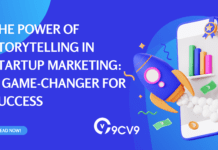





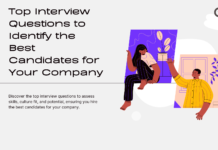


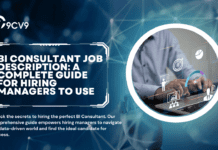


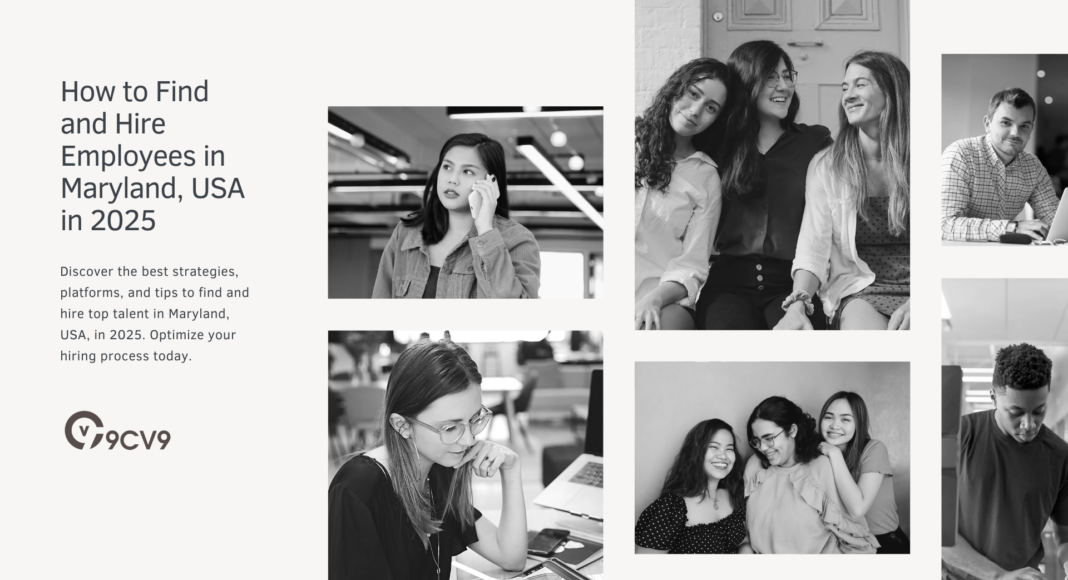


![Writing A Good CV [6 Tips To Improve Your CV] 6 Tips To Improve Your CV](https://blog.9cv9.com/wp-content/uploads/2020/06/2020-06-02-2-100x70.png)


